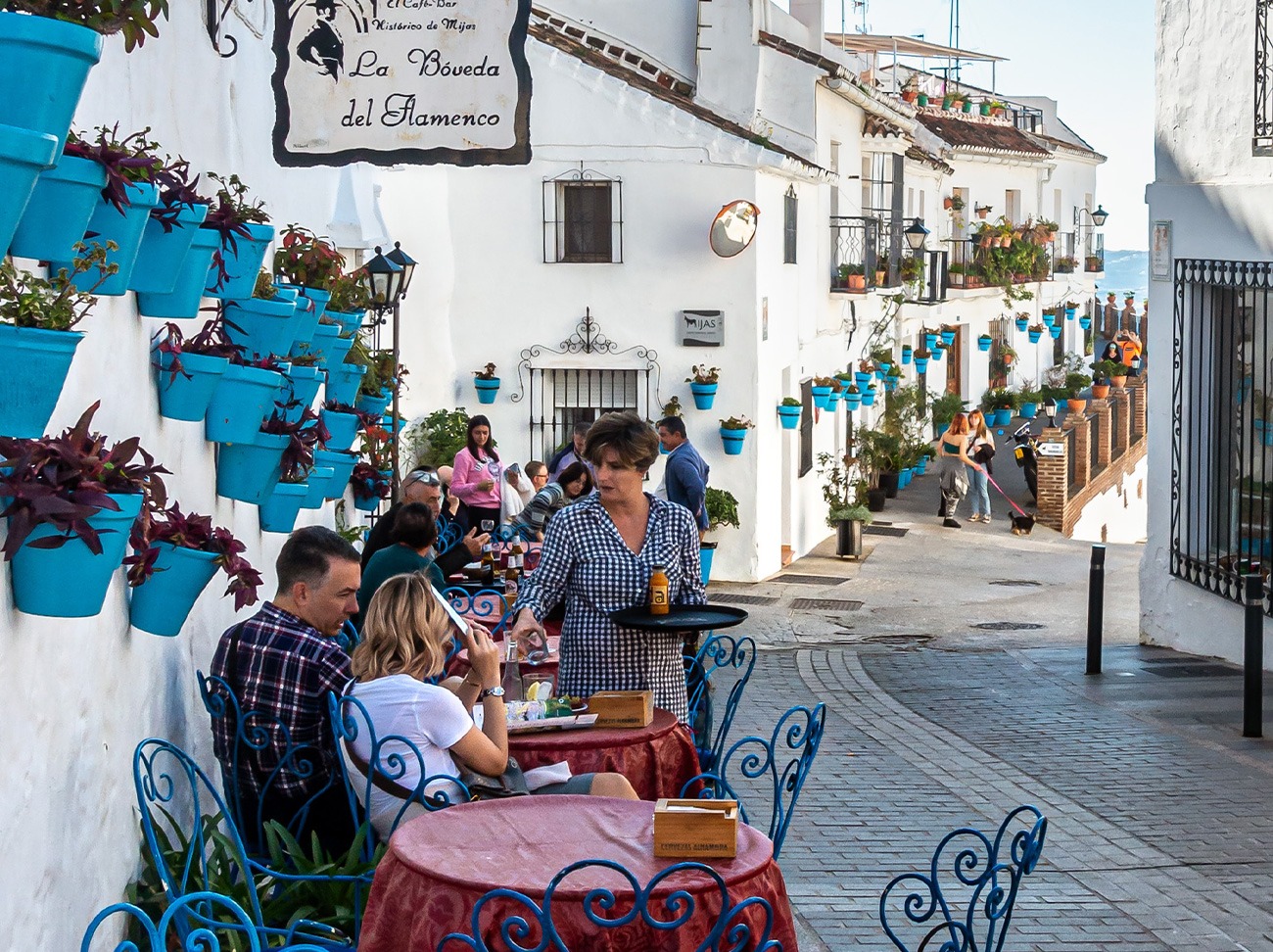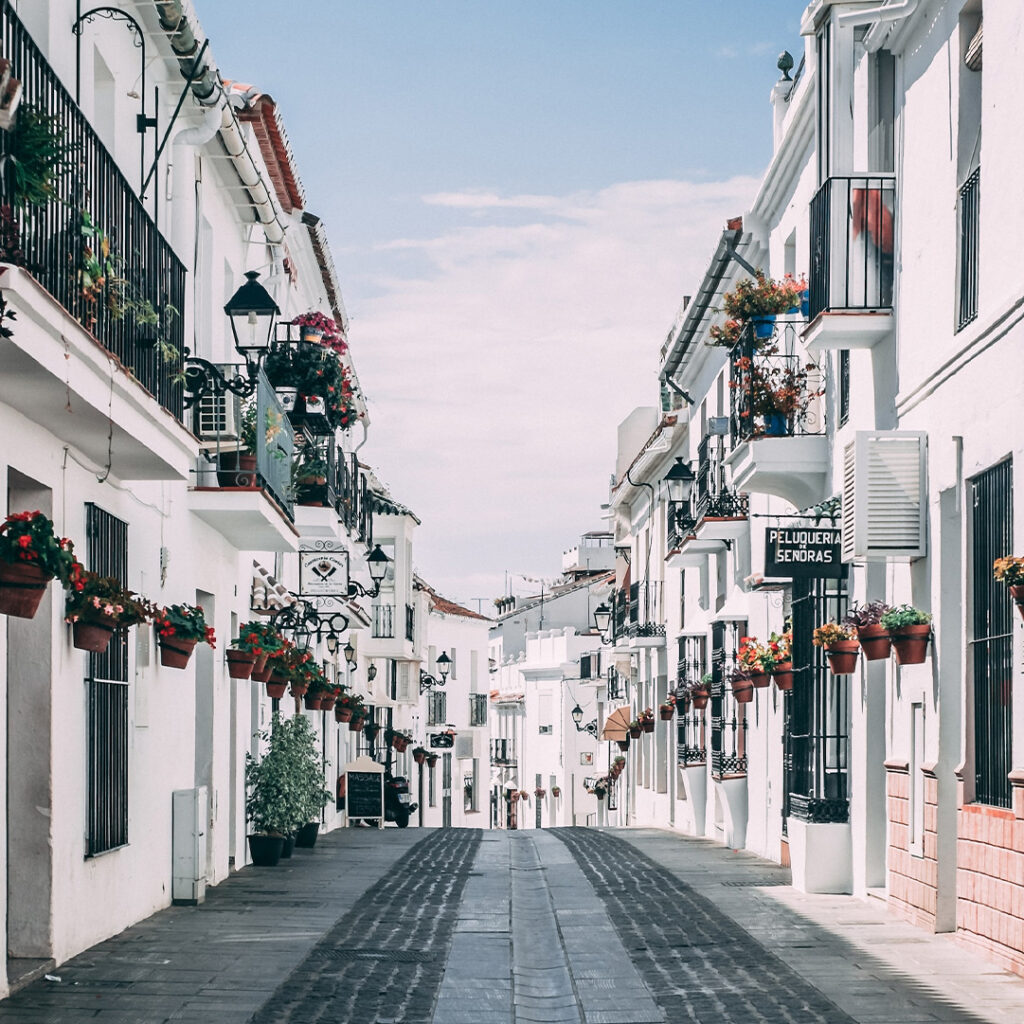
27 Jun Mijas – the white city
Mijas is one of the many “white villages” along the Costa del Sol and perhaps the most famous. A small town that in the old days mainly supported itself on agriculture and fishing until the tourist explosion in the 1970s. Since then, tourism and the construction of holiday homes for Spaniards and foreigners have been the engines of the local economy.
All the houses in the city have to have white facades and it almost looks like they are repainted every year. Small, narrow streets in harmony with the whitewashed houses have helped make Mijas Pueblo a very popular place to both visit and live.
With its 79,483 inhabitants, Mijas is the third largest municipality on the Costa del Sol after Málaga with 570,000 and Marbella with 140,000. Mijas is also one of the largest municipalities in Spain by area and, next to Málaga, the largest on the Costa del Solar. It is 148.8 square kilometers in size, which can be compared to Fuengirola’s 10.2 square kilometers. The population density in the two cities also differs greatly. In Mijas, 550 people live per square kilometer, in Fuengirola 7,000. What a difference in two cities with almost the same number of inhabitants! Another interesting figure is that of the total population in Mijas, a whopping 41.7 percent are foreigners, which makes it one of the most foreign-dense municipalities in all of Spain and significantly larger than all other municipalities along the Costa del Sol. The population has also increased explosively since the tourist boom began in the 1970s, when Mijas had 9,300 inhabitants compared to today’s almost 80,000.
Ancient history
Mijas has an ancient history that began long before Christ. The city was founded in prehistoric times by the Phoenicians, who were then followed by the Romans. It became a trading center with a good location on the important Roman road between Cádiz and Málaga. After the end of Roman rule, the Visigoths came in 714 and ruled Mijas until the Moors took control. It was the Romans who gave the city the name Tamisa, which was then shortened by the Arabs to Mixa and finally changed to Mijas, the current name of this beautiful, whitewashed city. For several centuries it was Arab until 1492 when the Spanish kings Ferdinand and Isabel retook Spain after the Arabs’ long time in power.
Recent history
During the 19th century, Mija’s livelihood was mainly based on agriculture and fishing. Fuengirola was in old times also part of Mijas but became an independent city in 1841, when Mijas ceded just over ten square kilometers to Fuengirola. At that time there was no road between the towns and it took until 1873 before it was built. Until the 1950s, Mijas was a relatively unknown town to most people, with very simple homes and farms out in the countryside. It wasn’t until 1953 that the first telephone line came to Mijas. After that, the development was quite rapid, thanks to the Costa del Sol’s greatly increasing popularity as a tourist destination. The first hotel was built and it was in Las Lagunas and in La Cala that the construction of holiday homes was started, which has continued at an unabated rate over the years until the present day.
What is included in the municipality of Mijas?
The municipality of Mijas consists of two different parts: Mijas Pueblo and Mijas Costa. Mijas Pueblo is the town itself, located 450 meters above sea level on the edge of the Sierra Mijas’ highest peak Pico de Mijas (1,150 meters above sea level) and stretching down the slope towards Fuengirola. Up here, at a distance of eight kilometers to Fuengirola and the coast, the municipal management also sits.
Mijas Pueblo with about 5,000 inhabitants

Mijas Pueblo is a typical Andalusian town with its whitewashed houses and narrow cobbled streets. Livestock, agriculture and olive groves were the main industries before tourism took over in the 1970s. It is one of the most visited towns on the Costa del Sol, attracting thousands of tourists every year who enjoy the charming town. The so-called burrotaxi is a donkey taxi, a special attraction since the 1960s where, for a few euros, the visitor can get a ride through the city in donkey-drawn carts. It started with some tourists wanting a little horse ride, when the agricultural workers came home from work with their donkeys, and so a new business activity was born in Mijas Pueblo.
Every year in September, a holiday is held and for over 20 years, international days have been organized in Mijas Pueblo, during which different countries show off their culture and traditions. A very popular tourist destination in the city is the small bullring, which is one of the few oval, and not round, arenas in Spain. Another popular excursion destination is the small chapel in the middle of the village where many foreigners get married.
Mijas Costa
Practically everything outside the vicinity of Mijas Pueblo goes by the name Mijas Costa. It is also the part of Mijas that stretches along the 12 kilometer stretch of coast between Fuengirola and Calahonda. Mijas Costa has three different core areas: Las Lagunas, La Cala de Mijas and Calahonda.





